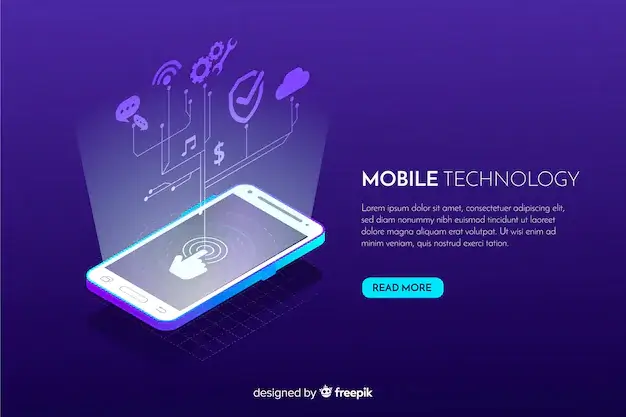

Apps are a huge part of our lives. We use them to communicate, get work done, and keep track of our schedules. As a business owner, you know several types of apps are available. But which is the right one for your business? This post will look at the different types of apps and what each can offer your business process. We’ll also discuss when it’s the right time to use each type of App.
Regardless of which App you choose, ensure it’s appropriate for your business and its needs. With so many options available, there’s surely an app perfect for you.
App development for mobile devices has become increasingly competitive, with new apps being launched every week. We all know about iOS and Android, but chances are you need to have your finger on what specific technology platforms developers use throughout their design process when building these pieces of software, which can be quite complicated.
What is an App?
An app is a mobile application or piece of software that can be installed and used on your computer. While most apps can be downloaded and used on your computer, some are designed to work exclusively with mobile devices.
The variety of apps available for your phone is nearly limitless. For example, some may only have one function while others can perform multiple tasks such as making restaurant reservations or grocery shopping.
Consider an experienced software developer from one of the best-reputed companies in town. You can rest assured that everything will go smoothly without errors, knowing they have covered everything.
Three Types of Apps:
Mobile apps come in three types depending on the needs of your business. They are as follows:
-
Native App:
Native apps offer a more immersive experience than web or hybrid applications. They’re built specifically for a single operating system, so you can’t mix and match platforms like Blackberry on an Android phone with iOS software running simultaneously. Native application development is also faster since it doesn’t require downloading code onto your computer before uploading them elsewhere; everything happens within the device itself, saving storage space and speeding up execution time (and vice versa).


Native apps are often written in a variety of programming languages. Some examples include Java, Kotlin, Python, Swift Objective C, or C++. React is also used by some native app development companies to create hybrid iOS/Android programs without having an operating system preference.
Advantages:Native apps are better because they use the device’s UI and resources more efficiently than other mobile applications. They provide users with a faster, smoother customer experience optimized for their particular smartphone or tablet model.
The best thing about native apps is that they have complete access to your device’s hardware, which means you can use all its features without having an internet connection. This includes things like Bluetooth, calendars, contacts, or NFC capabilities.
Disadvantages:The problem with native apps is that if you start developing them, there’s no way to ensure your efforts don’t go lost because of the different platforms. You can’t just reuse code from one platform to another. It’s cost-prohibitive and time-consuming, which generally drives up costs for maintaining your app development process as you go along with it.
Native apps take up a lot of storage space on your device. Every time there’s an update, you must download and reinstall the new file, which can be time-consuming.
Freepik
2. Web Apps:
Web apps are similar to native ones, but they’re accessed through a browser on your mobile device instead of being standalone applications downloaded and installed onto your phone.
Websites that work on any device are becoming more popular, and responsive web design has made this possible. Websites will adjust their user interface depending on the kind of smartphone or tablet you use to access them, so they can provide an enjoyable browsing experience for everyone regardless of whether your browser is mobile-optimized.
Progressive Web Apps (PWA) are web apps that run inside your browser, similar to normal websites. This means the site loads faster than traditional applications, and you can use all its features on mobile platforms.
Web apps are the future of software design. They’re built using HTML5, CSS3, and JavaScript to create interactive experiences that span across all devices, be they desktop computers or mobile phones.
Advantages:Web-based development has many benefits, including not needing to customize your App for any specific platform or operating system. This saves time and money.
The software is easy to use and doesn’t require any downloading! There’s nothing that takes up space on your device memory like an app would, making maintenance easier. Plus, you don’t have the hassle of updating apps through the App Store or Android. You have to update live over a web browser without installing anything new onto your phone/tablet or PC.
Disadvantages:Web apps are dependent on the browser used. There may be features available in one version of Chrome that isn’t in another. Users could experience differing functionality when using their devices with different browsers, giving them varying experiences depending upon what’s installed and which web pages they visit.
This is why it’s important to ensure you have an internet connection whenever your website needs one. Even if there’s an “offline mode,” the device will still need access to its data and updates from backup or fresh content delivery on screen.
3. Hybrid Apps:
The recent trend in the mobile app world is a hybrid application. These web-based applications have all of the advantages of being native, but they also look and feel like regular apps on your phone or tablet.
They can have the same interface and look as their desktop apps, but they’re just websites that replace traditional programs with modern technology.
Hybrid apps are a combination of both web technologies and native APIs. They are developed using Ionic and Objective C/Swift languages and HTML5 or CSS3 for design elements such as navigation menus. This means they can be built quickly without sacrificing performance like other, more traditional platforms might do.
Advantages:Hybrid apps are often a faster option than native ones. As such, they can be used as your “minimum viable product” or MVP – the first step in developing an app that eventually becomes successful and popular with customers.
The hybrid App is the best way to get your idea out there. With less time and money spent on development, you can focus all of this attention on what matters. They also load faster and provide a consistent user experience across devices, making them ideal for use in countries where internet access may be slower or inconsistent (such as developing nations). They use a single code base that covers both iOS & Android alike. There’s less maintenance needed.
Disadvantages:Hybrid apps are not as powerful or fast compared to their native counterparts.
Points to Remember – When choosing the perfect App that suits your business:
You should consider the most important features when creating an app for your business. Many perfect options work best for some companies. Still, some may only find certain factors in some types or genres worth considering before deciding which model fits better than others.
You should take into account a few other factors too. First, it’s important to look at what type or function an app offers and who will use them, and why they need such services in their lives. Consider whether this particular software tool could help with any plans.
Conclusion:
Apps are everywhere, and they come in all shapes and sizes. Our lives have been revolutionized by applications, from the tiniest calorie counter to the most complex enterprise resource planning system. Hope this article helped you understand different types of apps and how to make yours stand out.


A fun-loving, creative, and passionate writer. Experienced as a curriculum writer for kids at CompuSkool (Information Technology) written interactive learning materials that engaged young minds between 3 to 17 year olds across different technology areas. After a break from writing, now pursuing passion through blogging. Now a technical writer at Squash Apps. Waiting for the future to reveal itself as days unfold.